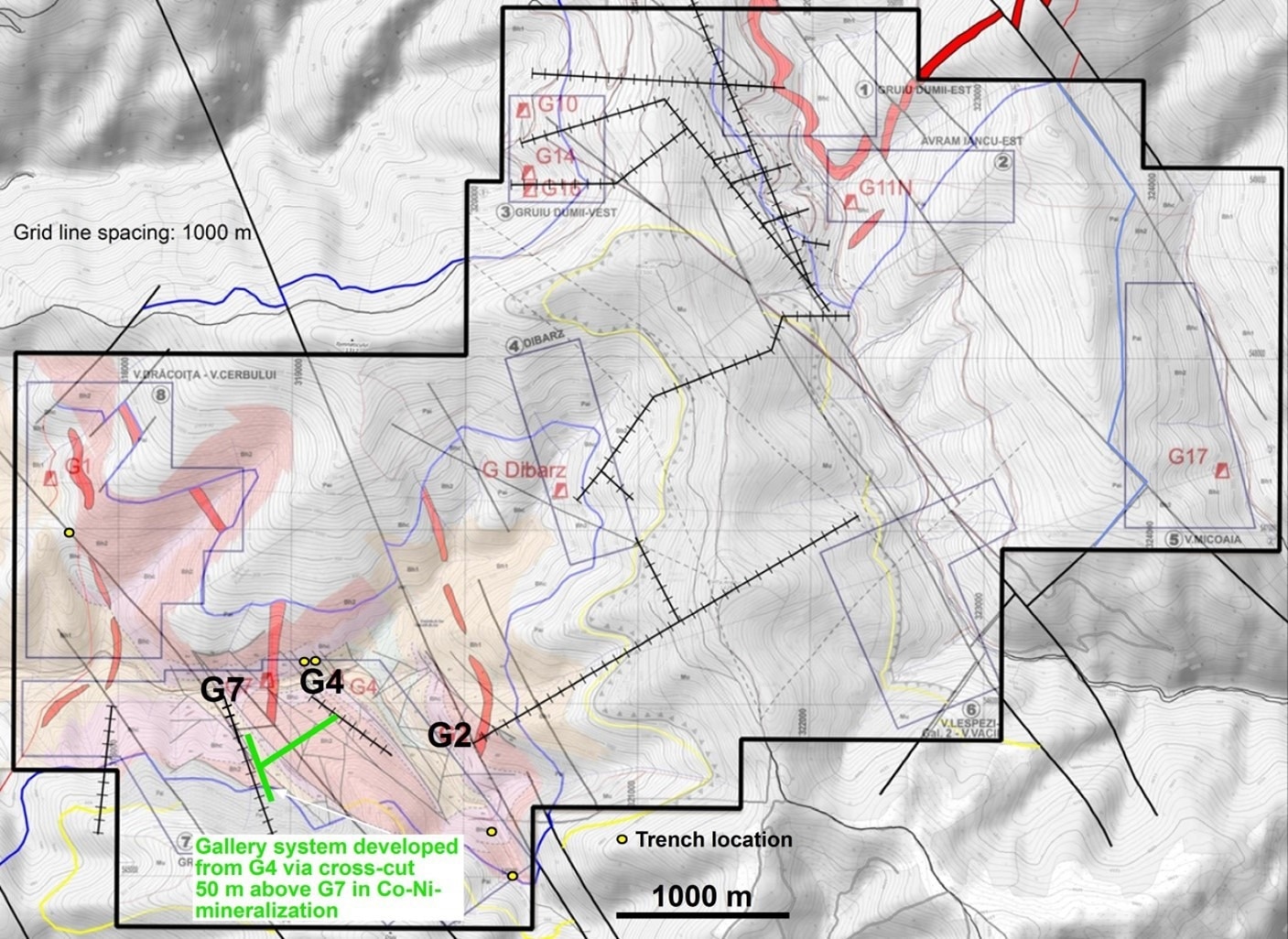Leading Edge Materials Inc. has disclosed that at its Bihor Sud project in the Apuseni Mountains of central-western Romania, it has discovered substantial Co-Ni-mineralization 50 m above the previously reported Gallery 7.
 License overview map showing the principal gallery locations; those recently reopened are highlighted in black (G2, G4, G7). G4 lies topographically 50 m above G7, and the crosscut driven towards G7 (shown in green) intersects the Co-Ni-mineralized system at a 50 m higher level than previously identified in G7. G4 is developed in base metal mineralization, featuring zones of Cu-Zn-Pb-Ag, which will also be subject to investigation. Image Credit: Leading Edge Materials Inc.
License overview map showing the principal gallery locations; those recently reopened are highlighted in black (G2, G4, G7). G4 lies topographically 50 m above G7, and the crosscut driven towards G7 (shown in green) intersects the Co-Ni-mineralized system at a 50 m higher level than previously identified in G7. G4 is developed in base metal mineralization, featuring zones of Cu-Zn-Pb-Ag, which will also be subject to investigation. Image Credit: Leading Edge Materials Inc.
We are extremely pleased by the ongoing findings of Co-Ni-mineralization in the two galleries we have re-opened to date. The lateral and vertical extension of the mineralization indicates that we are potentially encountering sizeable systems with good potential. INSEMEX safety inspectors report notes the very good state of both G4 and G7, and following the installation of ventilation, our local geology team will be able to map and sample the mineralized zones.
Eric Krafft, Interim Chief Executive Officer, Leading Edge Materials Inc.
A crosscut towards G7 was discovered after the INSEMEX gallery safety inspection for G4 was finished, and a quick assessment of its geological characteristics was conducted. Around 30 years ago, the crosscut was designed to investigate the possible extent of the mineralized system found in G7. G4 and the crosscut are joined by a raise and are 50 m higher than G7.
G4 and G7 are separated laterally by around 700 m. These geological discoveries show how far the Co-Ni zone extends vertically and laterally. Initial studies have shown that G4 was driven into a Cu-Zn-Pb-Ag mineralized zone with high-grade veins.
The company is currently installing a ventilation system to ensure that fresh air flow is established, enabling the execution of mapping and channel sampling to outline the full extent of exposed Co-Ni mineralization in the G7/G4 crosscut and Cu-Zn-Pb-Ag mineralization in G4 and to set up an underground drill program later in the year.
It should be observed that such measurements do not accurately depict mineralization grades and only cover the surface of rocks with an area of around 1 cm2. These XRF measurements are only used in the context of the work being done here to show that there are base metals present in the mineralization found.
Due to the relatively warm weather for late February in the Romanian Bihor Mountains, the company was able to move forward with its surface trenching operation ahead of schedule. On the western part of the license, a total of five trenches are being excavated; they are anticipated to be available for mapping and sampling in early March.